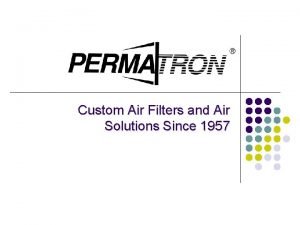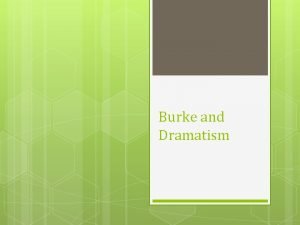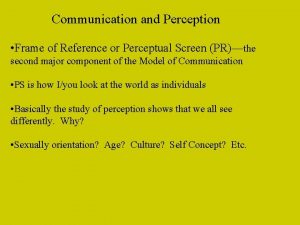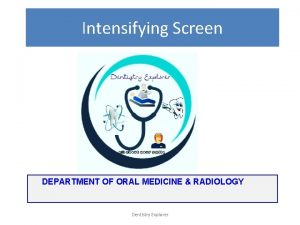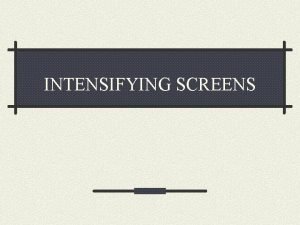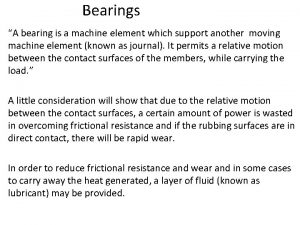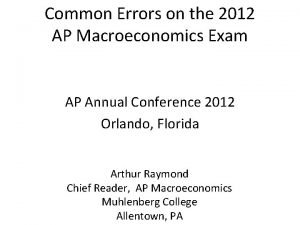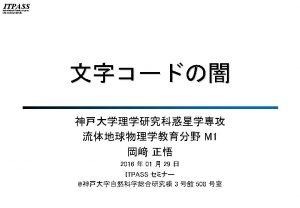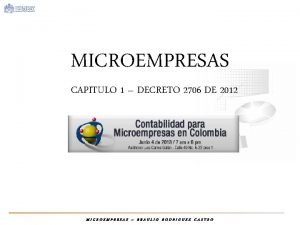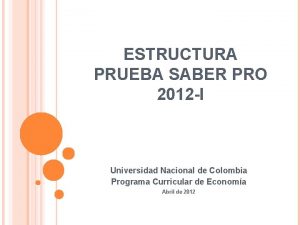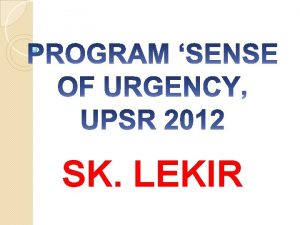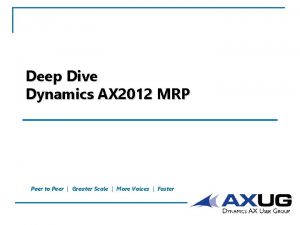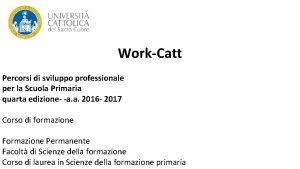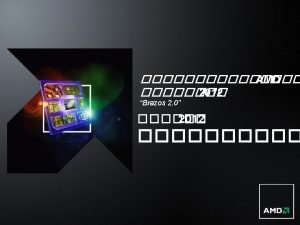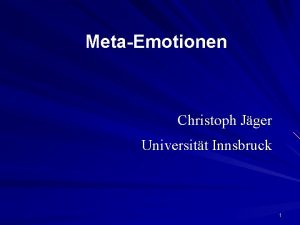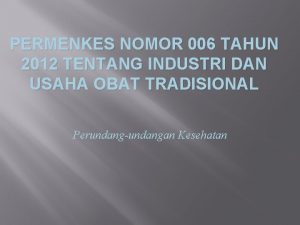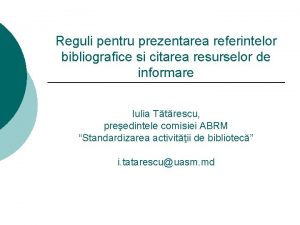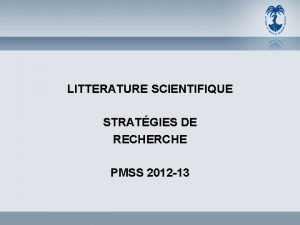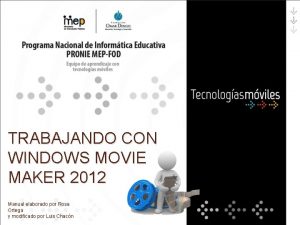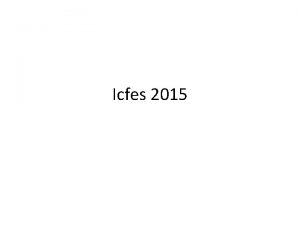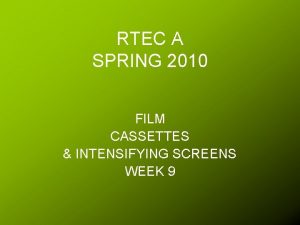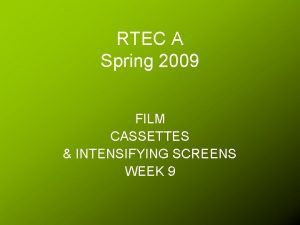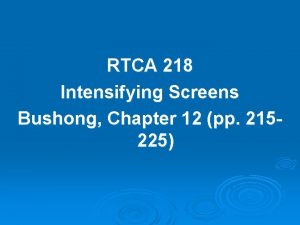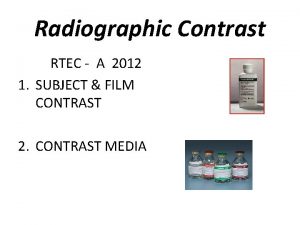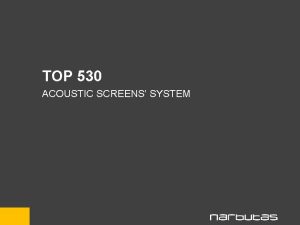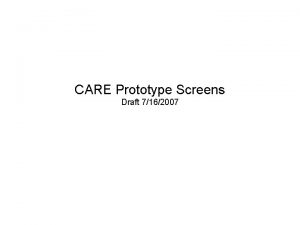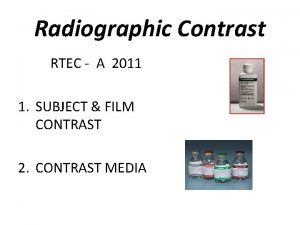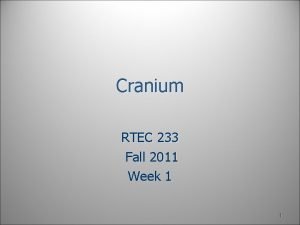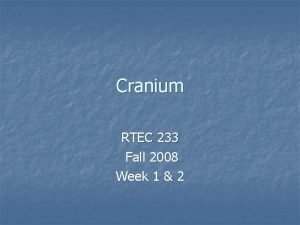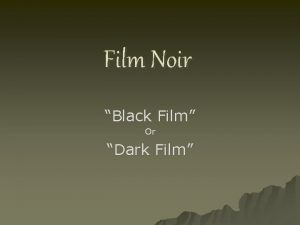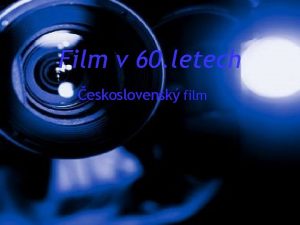RTEC A Fall 2012 FILM CASSETTES INTENSIFYING SCREENS

























































- Slides: 57

RTEC A Fall 2012 FILM CASSETTES & INTENSIFYING SCREENS WEEK 9

FIRST “FILM” • GLASS PLATES • CELLULOSE ACETATE – HIGHLY FLAMMABLE – EASILY TORN – RESPONSIBLE FOR MANY FIRES IN HOSPITAL BASEMENTS

FILM SIZES • 14 X 17 • 11 X 14 • 10 X 12 • 8 X 10

Film Sizes Standard “inches”: Metric: • • 8” x 10” x 12” 11” x 14” x 17” 18 cm x 24 cm x 30 cm x 35 cm x 43 cm

X-Ray Film • Film is a media that makes a permanent record of the image. • Image recorded on film is caused by exposure to photons.

Image Formation • X-ray photons converted to light photons • Image before processing – Latent image • Made visible by chemical processing – Manifest image

X-ray Film cont’d • Radiographic film was most common image receptor • Two parts: 1. Base 2. Emulsion

Film Construction - BASE • Made of a polyester plastic • Must be clear, strong, consistent thickness • Tinted pale blue or blue-gray (reduces eye strain) • COATED ON 1 OR 2 SIDES WITH EMULSION

Film Construction - EMULSION • Film emulsion can be on one side or both sides of base (single emulsion / double emulsion) • Protective overcoat layered on top of emulsion • Emulsion is a gelatin containing the film crystals

Film Emulsion • Made of mixture of gelatin & silver halide crystals • Most x-ray film emulsions made of : silver bromide (90%) silver iodide (10%) • Photographically active layer – activated by light & radiation to create image

FILM COMPOSTION • SINGLE OR DOUBLE EMULSION COATED ON A BASE EMULSION : GELATIN • WITH SILVER HALIDE CRYSTALS • BASE: SUPPORT POLYESTER

X-Ray Film Cross Section

IMAGE ON FILM • SINGLE EMULSION = BETTER DETAIL • DOUBLE EMULSION = LESS DETAIL • PARALLAX – single image • With double emulsion – an image is created on both emulsions – then superimposed – slight blurring of edges

PARALLAX – each emulsion has an image single image overlapped – edges less sharp

LIGHT VS DARK AREAS ON FILM • DARK SPOTS – SILVER HALIDE CRYSTALS THAT HAVE BEEN EXPOSED TO PHOTONS – TURN TO BLACK METALLIC SILVER AFTER PROCESSING • LIGHT AREAS – NO CRYSTALS EXPOSED – SILVER HALIDE IS WASHED AWAY WITH PROCESSING


Film Characteristics • Size of silver halide crystals & emulsion thickness determine speed of film and degree of resolution • Speed – the response to photons • Resolution – the detail seen

Film Speed / Crystal size • Larger crystals or Thicker crystal layer – Faster response= less detail, and less exposure (chest x-ray) • Finer crystals / thinner crystal layer – Slower response, greater detail, more exposure (extremity)

Amount of Crystals • More silver halide crystals = faster film • Less silver halide crystals= slower film




FILM BIN - STORAGE

Film Storage • Clean, dry location • 40 – 60 % Humidity 70 º Fahrenheit • Away from chemical fumes • Safe from radiation exposure • Standing on edge • Expiration date clearly visible



X-ray Film Sensitivity • • • Light X-rays Gamma Rays Gases Fumes • • Heat Moisture Pressure Static Electricity • Age So what happens? ?

FILM FOG!!!! • Unintended uniform optical density on a radiograph • Get a long scale of contrast

Cassettes serve 3 important functions: 1. Protect film from exposure to light 2. Protect film from bending and scratching during use. 3. Contain intensifying screens, keeps film in close contact to screen during exposure.

Cardboard Cassettes Direct x-ray exposure to film required • 25 to 400 times more radiation to create an image on the film • BETTER DETAIL THAN FILM SCREEN (NO BLURRING OF IMAGE FROM LIGHT) • ALL EXPOSURE MADE FROM X-RAY PHOTONS • BIG DOSE TO THE PATEINT

CASSETTE or FILM HOLDER • The CASSETTE is used to hold the film during examinations. • It consist of front and back intensifying screens, and has a lead (Pb) backing. • The cassette is light tight

Cassette Features - Front • Exposure side of cassette is the “front”. • Has the ID blocker (patient identification) • Made of radiolucent material • Intensifying screen mounted to inside of front.

Cassette Features - Back • Back made of metal or plastic • Inside back is a layer of lead foil – prevents backscatter that could fog the film • Inside foil layer is a layer of padding – maintains good film/screen contact • Back intensifying screen mounted on padding

FILM CONSTRUCTION • MUST BE MATCHED WITH 1 OR 2 SIDED INTENSIFYING SCREENS • Single emulsion film is used with single intensifying screen.

Screen Construction • Polyester plastic base – support layer • Phosphor layer – active layer • Reflective layer – increases screen efficiency by redirecting light headed in other directions • Protective coating

Intensifying screens

Intensifying Screens • Flat base coated with fluorescent crystals called phosphors • Active layer(phosphors) give off light when exposed to photons (x-rays)

Intensifying Screens Phosphors • RARE EARTH – (emits green light) – Developed in 1980’s – Most efficient – Most common in use today • CALCIUM TUNGSTATE (blue light) – Not as efficient – Not used as often

Rare Earth Screens • Gadolinium • Lanthanum • Yttrium • Found in low abundance in nature

INTENSIFYING SCREENS DISADVANTAGES: – less detail than direct exposure (detail better with rare earth than calcium tungstate screens) ADVANTAGES: – Reduce patient exposure – Increase x-ray tube life

Spectral Sensitivity OR SPECTRAL MATCHING Film is designed to be sensitive to the color of light emitted by the intensifying screens • Blue – UV light sensitive film – CALCIUM TUNGSTATE screens • Green, Yellow-Green light sensitive film RARE EARTH screens

Intensifying Screen & Film Cross Section

• The light photons are emitted by phosphor crystals. • These crystals are significantly larger than the silver halide crystals in the film • Screen reduces image sharpness • Exams requiring extremely fine detail use screens with small crystals.






Screen Speed • Efficiency of a screen in converting x-rays to light is Screen Speed.

Screen Speed • Greater efficiency – less exposure - faster – Standard screen speed class of 100 – 200 screen speed is twice as fast • Speeds for routine work: 200 – 800 • Speeds for high detail: 50 - 100

SCREEN SPEEDS • FASTER SPEED – REDUCES PATIENT EXPOSURE • FASTER SPEED – – REDUCES IMAGE DETAIL (LIGHT BLURING AROUND IMAGE)


POOR SCREEN CONTACT • NO GAPS– FOAM BACKING HELPS TO PLACE INTENSIFYING SCREENS IN DIRECT CONTACT WITH THE FILM • IF GAPS • MORE LIGHT CAN BE EMITTED IN SPACE, CAUSING THE IMAGE TO BE OF POOR DETAIL


Image creation • 1% of x-ray photons that leave patient • Interact with phosphors of intensifying screens • 100’s of light photons created to make image on film • Light photons expose silver halide crystals in the film emulsion – • Turn black metallic silver after procession


QUESTIONS ?
 Atm ui design
Atm ui design Revolving screens
Revolving screens Vm1650 centrifuge basket
Vm1650 centrifuge basket Hailstop hail guard netting
Hailstop hail guard netting Terministic screens
Terministic screens Serp.doe.louisiana.gov login
Serp.doe.louisiana.gov login Perception in communication
Perception in communication Brigance scoring chart 3 year-old
Brigance scoring chart 3 year-old Edward gordon craig hamlet
Edward gordon craig hamlet Dental intensifying screen
Dental intensifying screen Construction of intensifying screen
Construction of intensifying screen What does intensifying mean
What does intensifying mean Knapp's relationship escalation model
Knapp's relationship escalation model Wedge film journal bearing
Wedge film journal bearing Ley 1549 de 2012
Ley 1549 de 2012 2012 ap macroeconomics free response answers
2012 ap macroeconomics free response answers Jis x 0213:2012
Jis x 0213:2012 Kausar halal meat
Kausar halal meat Decreto 2706 de 2012
Decreto 2706 de 2012 Fpl 2012
Fpl 2012 Gina wilson 2012
Gina wilson 2012 Prueba saber 2012
Prueba saber 2012 Www cxc org results 2012
Www cxc org results 2012 Indicazioni nazionali 2012 schema
Indicazioni nazionali 2012 schema Windows live movie maker effects
Windows live movie maker effects Sk lekir
Sk lekir Pearson 2012
Pearson 2012 Iso 9001:2012
Iso 9001:2012 Master planning parameters ax 2012
Master planning parameters ax 2012 2012 pearson education inc
2012 pearson education inc In 2012
In 2012 Eas scuola primaria esempi
Eas scuola primaria esempi Decreto 2784 de 2012
Decreto 2784 de 2012 Europsko prvenstvo 2012
Europsko prvenstvo 2012 Windows server 2012 r2 essentials
Windows server 2012 r2 essentials What makes london olympic 2012 exceptionally sensational
What makes london olympic 2012 exceptionally sensational орнокард
орнокард Oracle developer tools for vs code
Oracle developer tools for vs code Utf-16
Utf-16 Easter 2012 australia
Easter 2012 australia Green plan 2012
Green plan 2012 January 2012
January 2012 Mondhelligkeitskalender 2012
Mondhelligkeitskalender 2012 Chapter 1 an introduction to anatomy and physiology
Chapter 1 an introduction to anatomy and physiology Ikt-procesmanualen
Ikt-procesmanualen In un rifugio di alta montagna il 31 marzo 2012
In un rifugio di alta montagna il 31 marzo 2012 Matarromera crianza 2012
Matarromera crianza 2012 Decreto nº7.830/2012
Decreto nº7.830/2012 Permenkes no 006 tahun 2012
Permenkes no 006 tahun 2012 Windows server 2012 essentials launchpad download
Windows server 2012 essentials launchpad download Cpea results 2014 grenada
Cpea results 2014 grenada Amway renewal 2014
Amway renewal 2014 Referinte bibliografice
Referinte bibliografice Pmss 2012
Pmss 2012 Windows movie maker 2012 download
Windows movie maker 2012 download 2012 pearson education inc
2012 pearson education inc Bases curriculares 2012
Bases curriculares 2012 Elephant riding in phuket icfes respuestas
Elephant riding in phuket icfes respuestas



